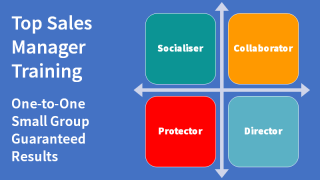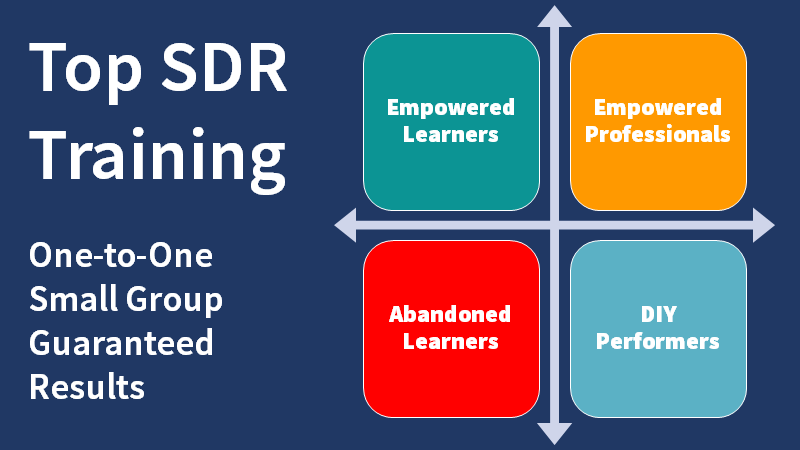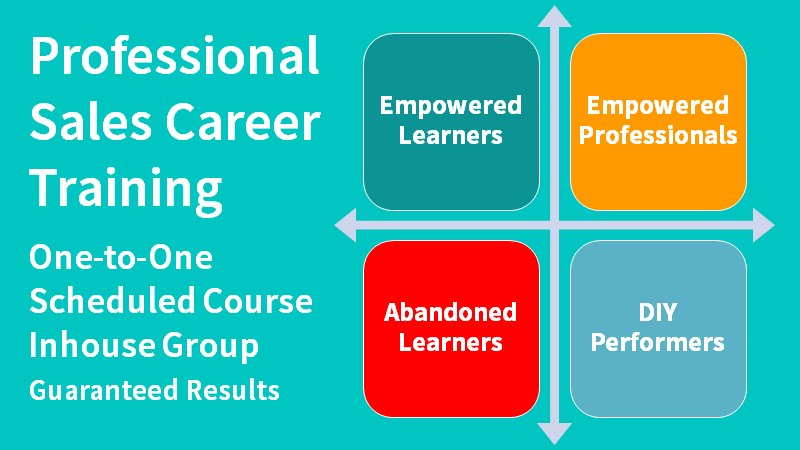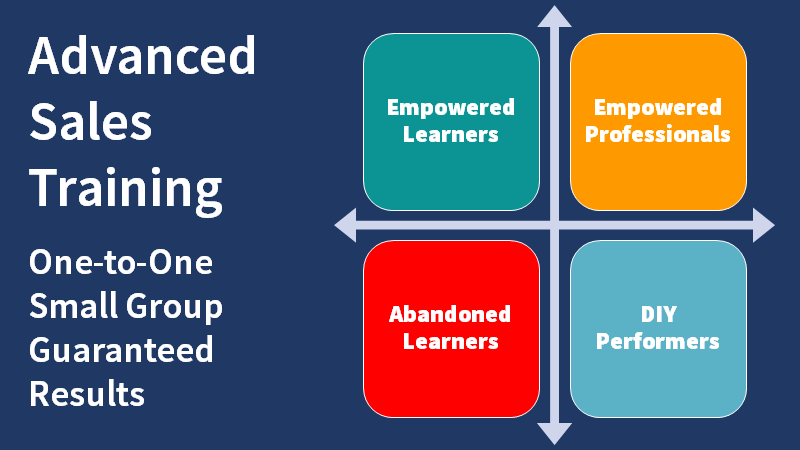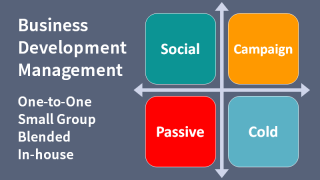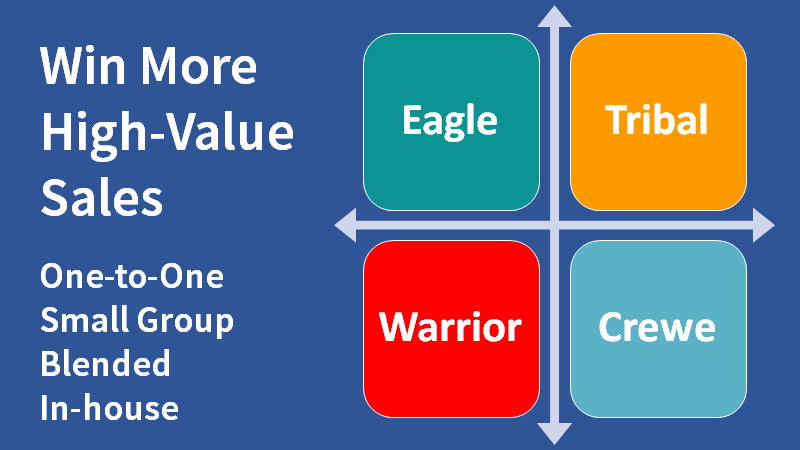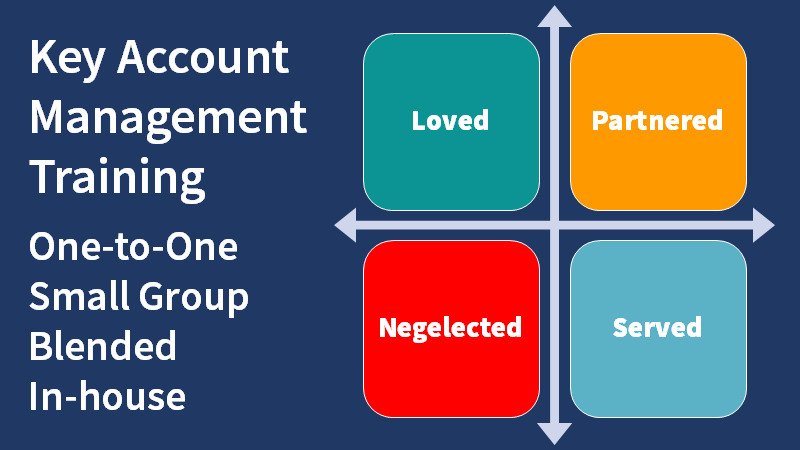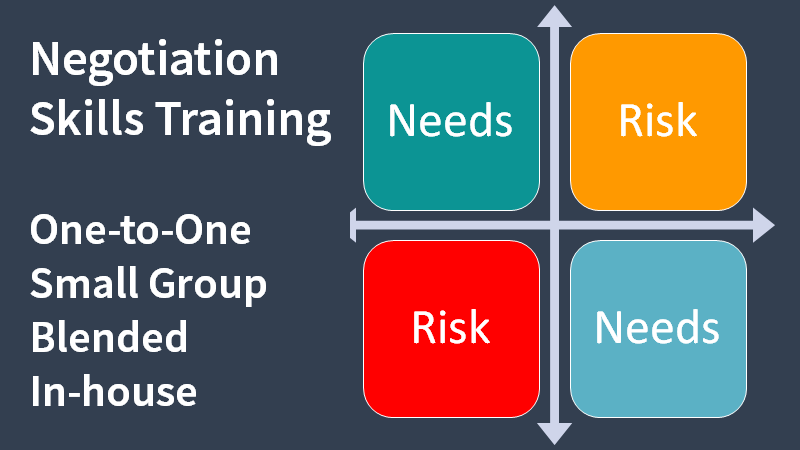Use this sales organisation assessment to improve sales team effectiveness and increase sales.
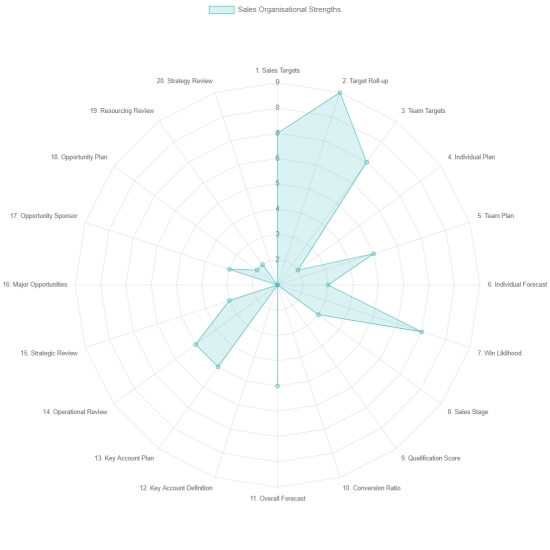
Complete this sales organisation assessment in 5 to 10 minutes.
The results are presented at the bottom of this page in real time.
Rate the organisational and operational effectiveness of any sales team or business.
Identify strengths and weaknesses, opportunities and vulnerabilities.
Use the feedback to guide sales organisation or operational improvements.
Read the notes for justifications and implementation guidance.
Sales Organisation Assessment Instructions:
To use this sales organisation assessment, score each of the statements below. Enter a score between 1 and 10 in the boxes adjacent to each statement.
Score according to the degree of truth in each statement.
The notes offer explanations and some implementation guidance.
Make your score reflect reality.
The data is not recorded so you only have yourself to mislead.
Your total score and a chart showing your strengths and weaknesses will be updated in real-time at the bottom of the page.
Individual Sales Targets Statement: 1. All quota-carrying salespeople have a written revenue target for the current measurement period. If they have the authority to vary the price of what they sell, they also have a written profit target for the current measurement period. Notes: Salespeople with a revenue target but not a profit target, who can vary the price of what they sell, will discount to win business without regard for margins or profitability. Salespeople with a profit target but not a revenue target, who can vary the price, will also discount to win the business for any amount of margin. They have no incentive to care about the ratio of margin to revenue or the overall profitability of the organisation. Lower prices make a salesperson's job easier and so they tend to exert pressure to reduce them. Even if they are not allowed to give discounts, they can influence pricing policy through selective customer feedback and opinions. Therefore sales targets should always reflect both the revenue and the profit needs of the business. | |
Individual Sales Target Roll-Up Statement: 2. The sum of all individual revenue and profit targets is not more than 10% above the figure necessary to meet the overall team and organisation's revenue and profit targets in the current measurement period. Notes: If the sum of all sales targets adds up to significantly more than a team or organisation's sales target then salespeople are put under unnecessary pressure, which decreases motivation and increases staff turnover. | |
Team Sales Target Statement: 3. All sales teams have a written gross profit and revenue team target for the current measurement period. Notes: As previously noted, having only a revenue target or only a profit target leads to more discounting. This is also true at a team leader or sales manager level. If the team leader or sales manager has the authority to vary prices, the same discounting motivations exist so it is important for team targets to include both profit and revenue elements. | |
Individual Target Achievement Plan Statement: 4. All quota-carrying salespeople have a current credible plan detailing how they will achieve their profit and revenue target in each measurement period looking forward at least six months. Notes: When each individual salesperson has a current and credible target achievement plan, managers and executives can have confidence in the likely achievement of the overall sales target. In addition, they can conduct regular plan progress reviews and gain advanced knowledge of any potential shortfalls. | |
Team Target Achievement Plan Statement: 5. Each sales team has a current written, scheduled and budgeted plan for achieving its written team sales target. The plan takes into account:
In addition, the plan is continually updated to accommodate actual results and any divergence as the measurement period progresses. Notes: Sales managers who wait for their team's sales target and compensation plans to be finalised before developing a target achievement plan, are behind before they begin. Target achievement planning should be a continuous activity commencing at least six months before the measurement period begins. Success depends on the quality and thoroughness of the thinking invested in the plan and its continuous updating to adjust for unexpected events. | |
Individual Sales Forecast Statement: 6. All quota-carrying salespeople maintain a current business forecast that looks forward at least six months and lists all of the sales opportunities that are being worked on together with the anticipated values and the expected close dates. Notes: Ideally, managers should be able to review the current forecast at any time. This might require salespeople to spend too much time updating the CRM system. From a practical standpoint, it is worth having an agreed day each week or month when forecasts must reflect the current status. | |
Forecasted Sale Likelihood Statement: 7. All forecasted sales include the salesperson's quantified estimation of the chances of winning the sale. Notes: While the judgement of salespeople varies and may not be consistent, having this information increases the richness of the data regarding a forecasted sale. It should complement quantified qualification, sales stage, and historical sales stage conversion data. | |
Sales Stage Definitions Statement: 8. Sales stages are clearly defined and aligned with the typical customer buying process. Stage exit criteria are also clearly defined so that it is easy to ascertain which stage a sales opportunity has reached. In addition, the current sales stage is included for all forecasted sales opportunities. Notes: While the pace of a customer buying process will vary, all customers go through a series of distinct stages on their way to a buying decision. Defining and using sales stages to monitor progress through a sale, aids sales pipeline management, improves forecasting, and guides actions. | |
Quantified Qualification Statement: 9. A quantifiable qualification checklist is used to score the qualification status of all forecasted sales opportunities. The current qualification score is updated in each sales stage and recorded along with the sales stage, in the sales forecast. Notes: Quantifying qualification status provides a means of assessing the quality of the knowledge associated with a sale and provides the opportunity for an alignment check between the qualification status, the sales stage, and the salesperson's 'likelihood of success' estimate. | |
Historical Stage Conversion Ratio Statement 10. Historical stage-by-stage sales conversion ratios have been recorded and are used to calculate the overall value of the sales pipeline. Notes: Overall and stage-by-stage historical conversion rate data provide a reliable lagging indication of any salesperson, team, or organisation's likely sales performance. At a team and organisation level, sales conversion ratios are stable and produce accurate predictions of future performance. When the data has not been collected, it is still valuable to re-construct past conversion ratios from partial data and informed estimates. | |
Overall Sales Forecast Statement: 11. The sum of the forecasts of all quota-carrying salespeople is sufficient to meet or exceed the overall sales target in each measurement period, looking forward at least six months. In addition, the total pipeline value multiplied by the historical stage-by-stage conversion ratios broadly agrees with the overall forecast totals. Notes: This bar is set high because it should command the attention of all managers, leaders, and policymakers in a business. If the forecast is insufficient to meet the business flow requirement then either salespeople are not forecasting effectively or the business is facing an imminent shortfall in revenue and profit. | |
Key Account Definition Statement: 12. A definition of the criteria used to decide if a customer warrants the appointment of a key account manager, has been agreed and published internally. Notes: If a business has a high dependency on sales to a few large customers, retaining those customers may be critical to the continued performance. The number one reason given by customers for switching suppliers is poor customer service. Key accounts warrant special attention and a key account manager is normally assigned to ensure the customer gets the necessary attention. Committing extra resources to look after particular customers is expensive so it is important to set a policy to govern whether a customer should be considered a key account. | |
Key Account Plan Statement: 13. All accounts meeting 'Key Account' criteria are allocated to a quota-carrying salesperson who maintains a 'Key Account Plan' that identifies account development strategy and actions together with a gross profit and revenue forecast looking forward at least six months. Notes: If a business has a high dependency on key accounts, it is essential that efforts across the organisation are coordinated. A current Key Account Plan drives account development, keeps managers informed, and ensures account management continuity. Key account plans should be reviewed frequently to ensure that they are current and contain enough detail to fulfil their purpose. | |
Key Account Status Review Statement: 14. Key Account Managers carry out a status review call with the customer's operational managers in all of their assigned key accounts, at least once every three months. Notes: Status review meetings are set up with those customer managers who are involved in the day-to-day use of the products, services, and solutions provided to the customer. These meetings are to review the status of all outstanding issues with the supply or function of what is sold and to identify any ongoing remedial actions that are outstanding on either side. Status review meetings are like project reviews and serve to ensure that the best possible service is being provided to the customer. | |
Key Account Strategic Review Statement: 15. Key Account Managers organise a strategic review with the top customer executives in all of their assigned key accounts, at least once a year. Notes: Strategic Review meetings are set up with board-level executives who are the leaders and policymakers of the customer's organisation. These meetings are for the account team and supplier executives to learn about the customer's vision, goals, and objectives for the coming year. The purpose is to ensure that the account team and supplier organisation continue to maximise the value of the products, services, and solutions supplied in the context of the customer's plans. In addition to the account team, at least one board-level supplier executive should be present for Strategic Review meetings. | |
Major Opportunity Definition Statement: 16. The characteristics that qualify a sales opportunity as being 'Major' or worthy of special attention in terms of planning and campaign resourcing, have been agreed and published internally. Notes: Since winning very high-value or strategically important 'Major' sales opportunities usually requires extra effort, close attention, and additional resources, it is important to define the criteria that determine if a sales opportunity qualifies as 'Major'. | |
Major Opportunity Sponsor Statement: 17. All opportunities meeting 'Major' criteria are allocated a senior management sponsor to support the salesperson leading the sale. Notes: It is easy with hind-site to recognise mistakes or omissions that led to the loss of a major business opportunity and it is impossible to recover the resources invested in the attempt. Success and failure impact the whole organisation. The risks should not be borne only by the salesperson leading the sales campaign. Having a senior sponsor ensures an appropriate level of due diligence, support, and collaboration throughout the organisation. | |
Major Opportunity Plan Statement: 18. The salesperson responsible for leading a Major Opportunity sales campaign maintains a sales opportunity plan that details the customer issues being addressed, the solution being proposed, the key influencers on the customer side, the competitive strategy, and all actions necessary to win the opportunity. Notes: Since winning major sales opportunities almost always involves a team of people drawn from different parts of the organisation, a written plan and guiding strategy are essential to achieving consistent success. | |
Major Opportunity Resourcing Review Statement: 19. As soon as a Major Opportunity is qualified, the salesperson responsible convenes a Resourcing Review meeting with all of the supplier managers who control resources that will be required to help win the opportunity. The purpose is to gain agreement from the managers that the opportunity is worth pursuing and commitment that the necessary resources will be made available. Notes: Since winning major sales opportunities almost always necessitates the use of people's time and materials from different departments across the seller's organisation, it is essential to ensure their availability before investing the necessary sales effort. | |
Major Opportunity Strategic Review Statement: 20. As soon as there is enough information available to formulate a competitive strategy, the salesperson convenes a Strategy Review meeting. The purpose of the meeting is to examine, test, and validate or improve the strategy and implementation plan. Notes: The information that should be gathered and made available to the reviewers before a Strategy Review meeting should include:
The Strategy Review meeting participants should be those leaders, managers, and salespeople who have the most experience of competing for similar major sales opportunities. The meeting should be managed by an experienced facilitator according to a carefully established structure in order to minimise conflict and the time required. All parties should utilise a common understanding of competitive strategy. The increased planning diligence that results from a strategy review of this nature, has been shown to significantly increase the likelihood of success with major opportunity sales campaigns. | |
| Total Sales Organisation Assessment Score |
Sales Organisation Assessment Score Guide
If your total score for the sales organisation assessment is over 150, compared with most, things are in very good shape. Could you have been overly generous in your assessment? Whatever your scores, the chart reflects strengths and weaknesses. Use the results to improve your sales organisation's effectiveness.
Don't leave it here. Decide your next steps.
Action is the key to all progress.
Here are some suggestions:
- Decide what you want to improve and make a plan. How to Get Better at Anything
- Review our sales management and leadership articles.
- Set up business coaching sessions. How a Business Coach Can Help You Find 25% More Business
- Schedule a call with Clive Miller for an informal review (free) or a formal, structured review.
- Have your assessment results graded or validated. Assessment Grading
- Outsource Sales Enablement or Sales Effectiveness projects and get them completed faster.
No data entered on this page is recorded so if you want to keep your scores, save the chart to your device. For PC's, right-click on the chart and select save-as. For mobiles, take a screenshot.
If you have found this SDR assessment useful, add a comment below to encourage others.
Sales Organisation Applications Include:
- Business Planning
- Sales Organisation Benchmarking
- Organisation Development Guidance
- Managing Sales Managers
- Setting Sales Management Standards
- Improving Sales Governance
If you are looking for ways to improve a sales organisation or sales operation, this assessment offers a readily accessible solution. For fractional support, telephone +44 (0)1392 851500, send an email to jimm@salessense.co.uk or use the contact form here.



